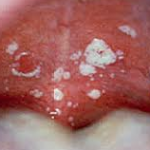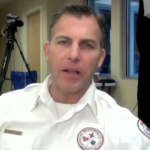In this post, I answer a question from a professional who has been training lay rescuers and wants to update their students to the new 2010 suggested guidelines.
The following excerpt is taken from the original email.
Greetings from India,
“We teach first aid and CPR (to the layperson/non medical person)in New Delhi, India and are reading the new guidelines so that they can be incorporated in the new year. I know the handbooks will be out in the first quarter but would like to start adding the 2010 guidelines sooner.
A couple of questions- your input would be appreciated.
1. Do we carry on with AVPU
2. As checking for breathing is being de-emphasized – how are first aiders to tell if breathing is present or not. From what i can figure out- look, listen feel is not to be used now.”
Merry Christmas and Happy New year.
Kind Regards,
New Delhi
The following is my response:
Hello Student,
Thank you for reaching out as I hope to be of assistance. Regarding the new updates for 2010 and how it relates to training the lay public.
1. Q: “Do we carry on with AVPU?”
A: Yes and No. Yes in so much as we are always kind of asking ourselves, “Is this person awake? Are they Verbal? Do they respond to pain(not that we should be causing any pain)? Are they unresponsive? But I have to say no, because we are checking to see if the person appears to be breathing or breathing normally? This does not fit in the AVPU scale for a level of consciousness. We must also remember that AVPU is an advanced medical training and the ECC/ILCOR recommendations do not teach lay rescuers to use AVPU anywhere in the curriculum.
2. Q: With assessment for breathing being de-emphasized and the elimination of the “Look, Listen, and Feel” part of assessment, what is the best way to train lay rescuers to assess for breathing?
A: This is a great question. Under the new guidelines, assessment for breathing is performed by looking for the following: Is the persons chest moving like in breathing? Does the person appear to be breathing normally? If the person is not breathing normally, and the chest is not rising and falling, the rescuer will initial emergency medical services and begin CPR starting with 30 chest compressions at least 2 inches deep and at a rate of at least 100 per minute.
The simplification of assessment for breathing was brought by confusion of agonal respirations vs. regular gas exchanging breathing. The hope is that if a rescuer notices that the person is not breathing normally, help will be called and initiation of CPR will not be delayed.
For those of us who worry that too many victims will receive CPR when it is not necessary and thereby suffer unnecessary injuries, one must be aware of the scientific studies that show that “only two percent of people receiving CPR suffered any injury at all from CPR when it was not needed. But the advantages of early initiation of CPR without delay, has been shown to improve survival with minimal risk of injury but with great increase of benefit.( http://circ.ahajournals.org/cgi/content/short/121/1/91)
Please note that all update training is available for free at: http://www.profirstaid.com
Thank you for your email and please let me know if you need any further assistance.
Best Wishes and Merry Christmas!
Roy Shaw, EMT-Paramedic
roy.shaw@procpr.org
royonrescue@gmail.com




